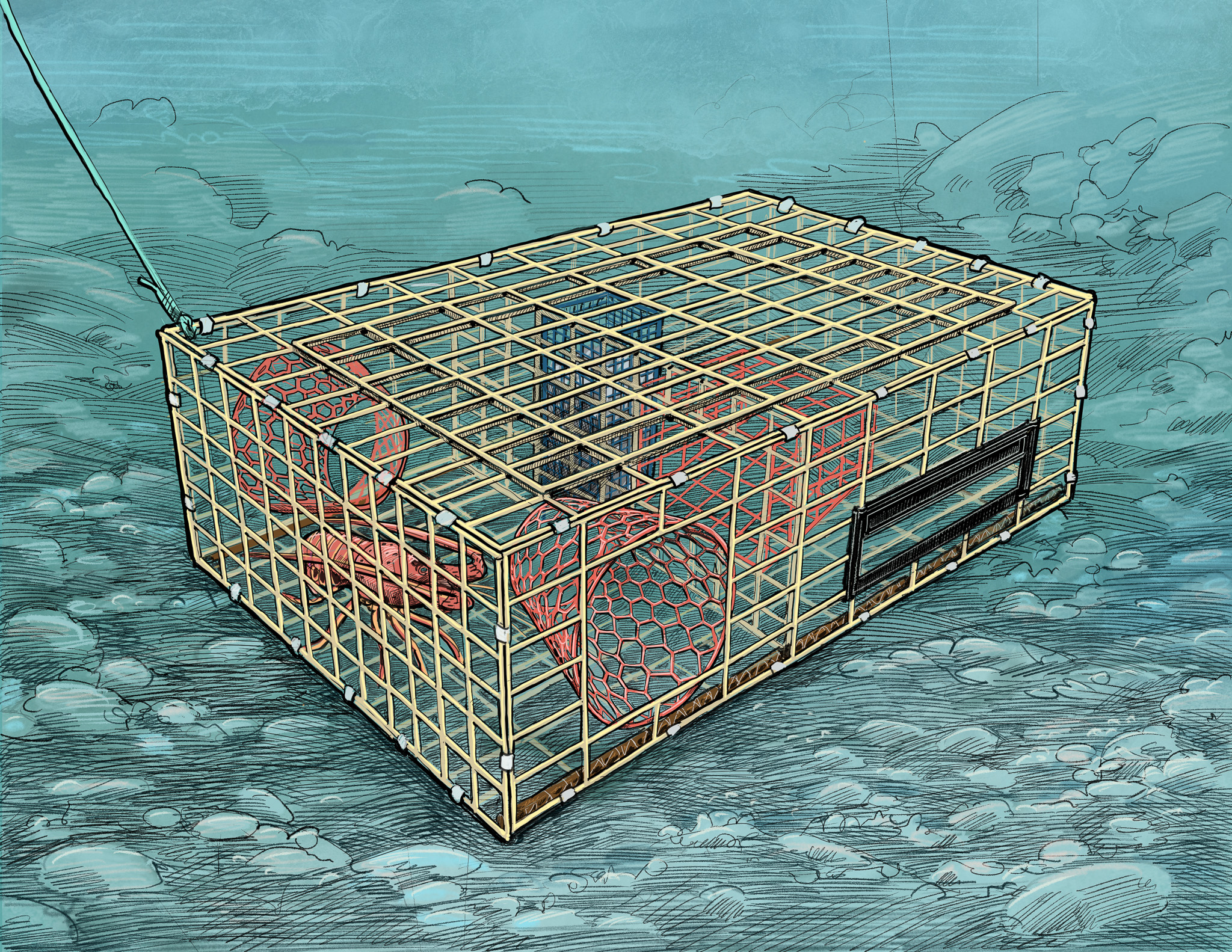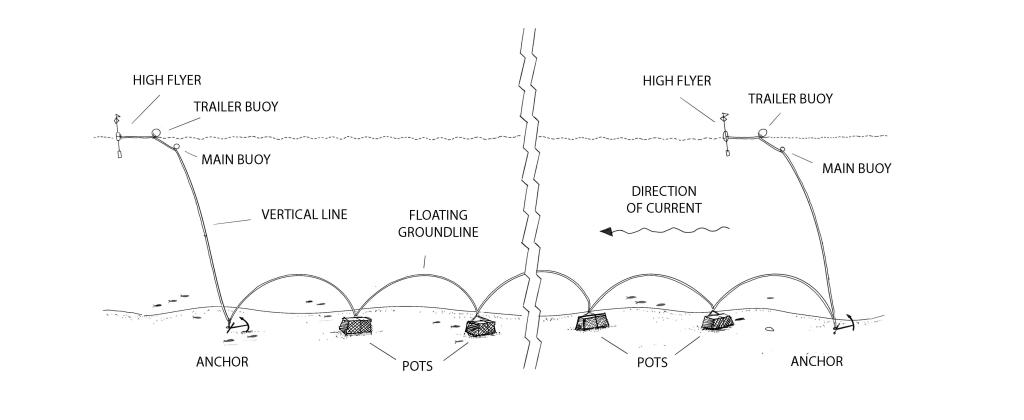
Traps used in commercial fisheries come in a variety of shapes, sizes and materials depending on the species being targeted. Round or conical traps are typically referred to as pots, whereas rectangular or trapezoidal traps are often simply called traps. Traps are used to catch a variety of shellfish and finfish.
Shellfish
Lobster, rock crab, spot prawn and Kellet's whelk
Many crustaceans are commercially fished using rectangular traps. The traps have steel frames wrapped with wire mesh that allows water to flow through the traps and small organisms to escape. The size of the mesh varies depending on the shape and size of the species being targeted. For example, spot prawn traps have smaller rectangular mesh than do lobster traps, and rock crab traps have square mesh.
A small basket of bait placed inside the trap attracts the target species to the trap. The target species crawls into the trap through a tunnel (called a funnel) at the bottom of one or both sides of the trap. Escape rings allow undersized crab, lobster and spot prawn as well as non-target species to get out of the trap. The traps also have clips that degrade over time so that if the trap is lost at sea, it will fall apart and enable animals inside to escape.
Commercial traps are deployed as “singles” or in “strings” of multiple traps attached together with a line. A float line with a surface buoy is attached to each single trap or at each end of a string. The traps are left out to soak for a certain amount of time, typically one to three days. The traps are retrieved with the help of a mechanical puller. Once onboard, the trap's contents are removed and measured and, if the catch is of legal size and marketable quality, it is stored on the boat. If not, the animals are returned to the sea. If traps are productive, fishermen replace the bait and set the gear in the same location; otherwise, they may move the gear to another area.
Finfish
Sheephead and Rockfish
In California, sheephead and a variety of rockfish species are caught using traps similar to those used for lobster, rock crab and spot prawn. Finfish traps differ in that they have funnels located midway up the side of the trap, enabling fish to swim into it. The traps are similar to shellfish traps in that they have mesh enabling water to flow through the trap and at least one escape port. They are also deployed and serviced in a similar way.
Sablefish are commercially fished with large rectangular and trapezoidal traps connected by a line set along the seafloor. These longlines of traps are marked by buoys and flag poles at each end. Similar to other fishing traps, sablefish traps are baited and have entrance funnels and escape rings to allow smaller fish to freely leave the trap. Sablefish traps are typically much larger than those used in other trap fisheries. Because of this, vessels used in the fishery have larger hydraulic blocks and more expansive deck space to haul and transport the large traps.
Note: Sablefish are also fished using round basket pots and conical slinky pots; visit our Pots page to learn more.
